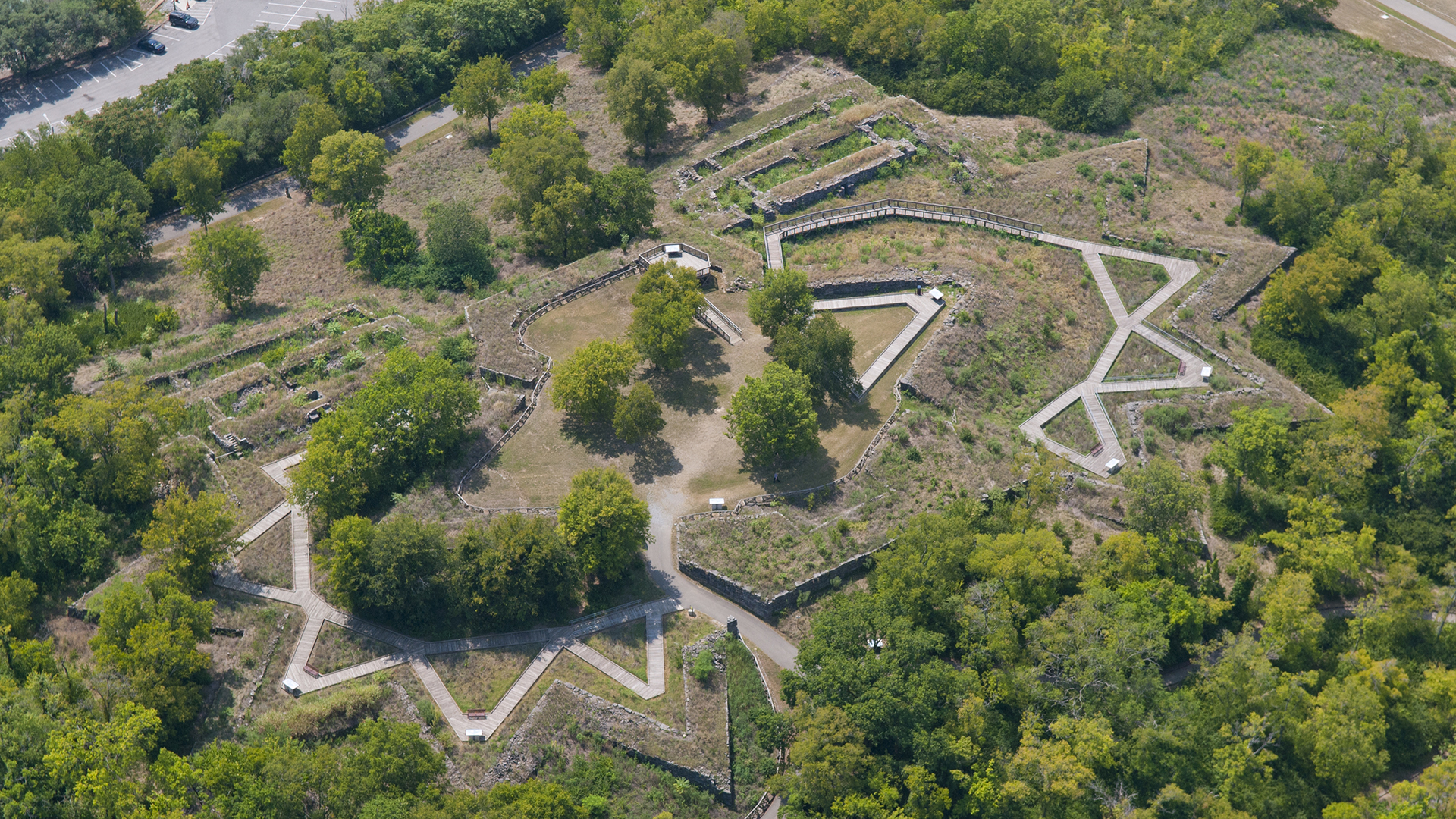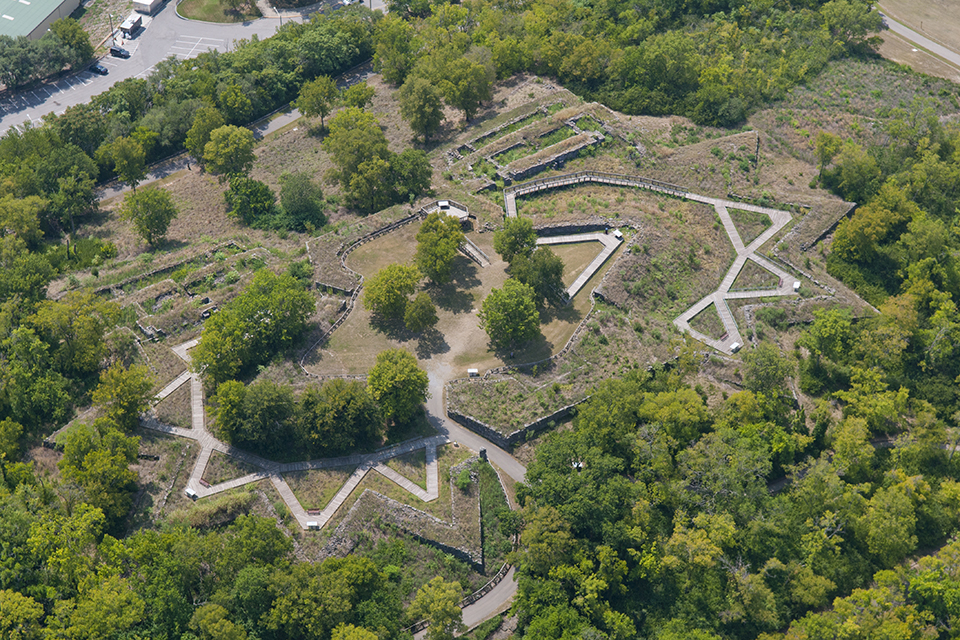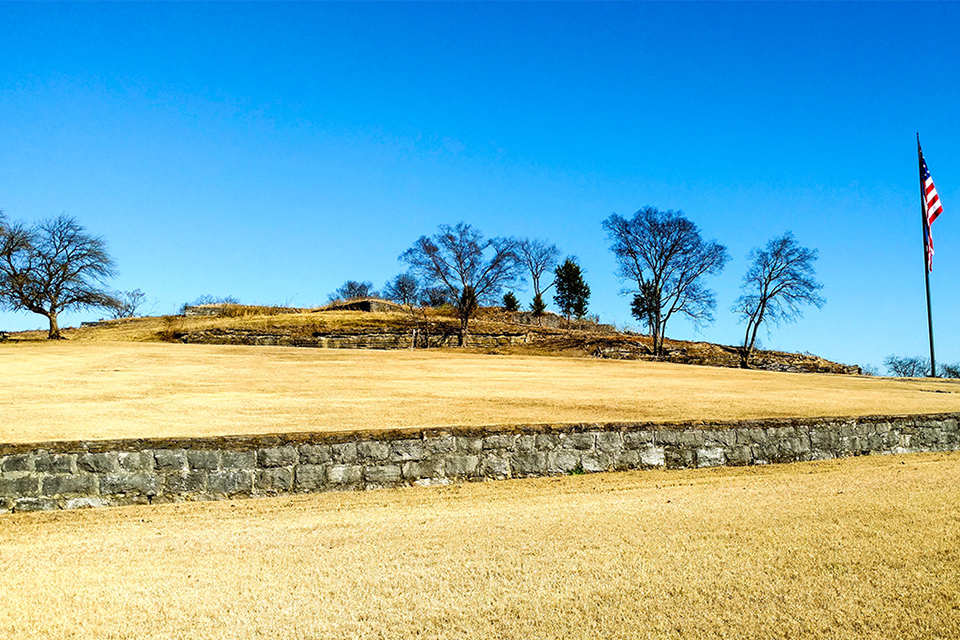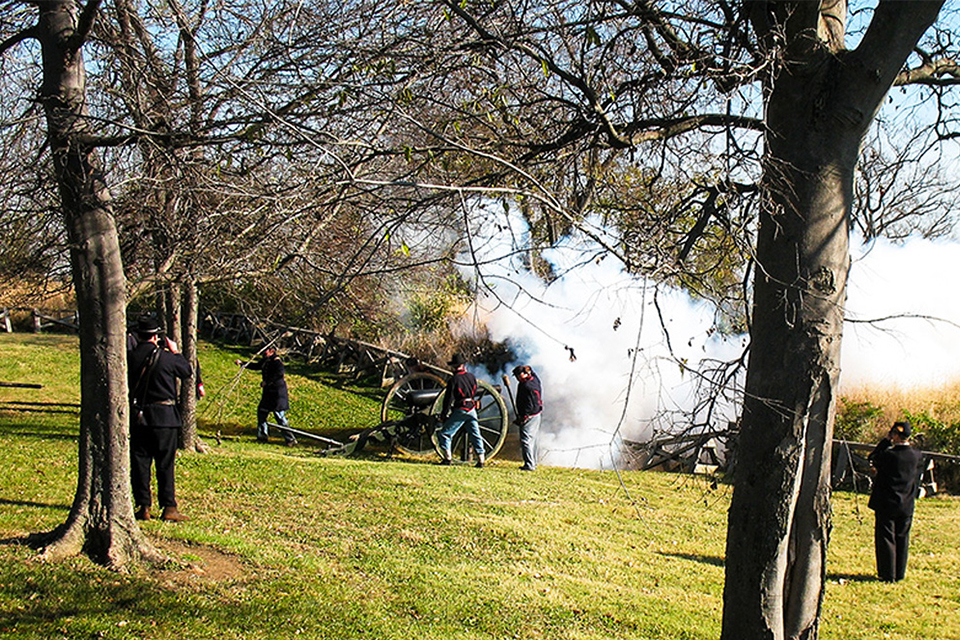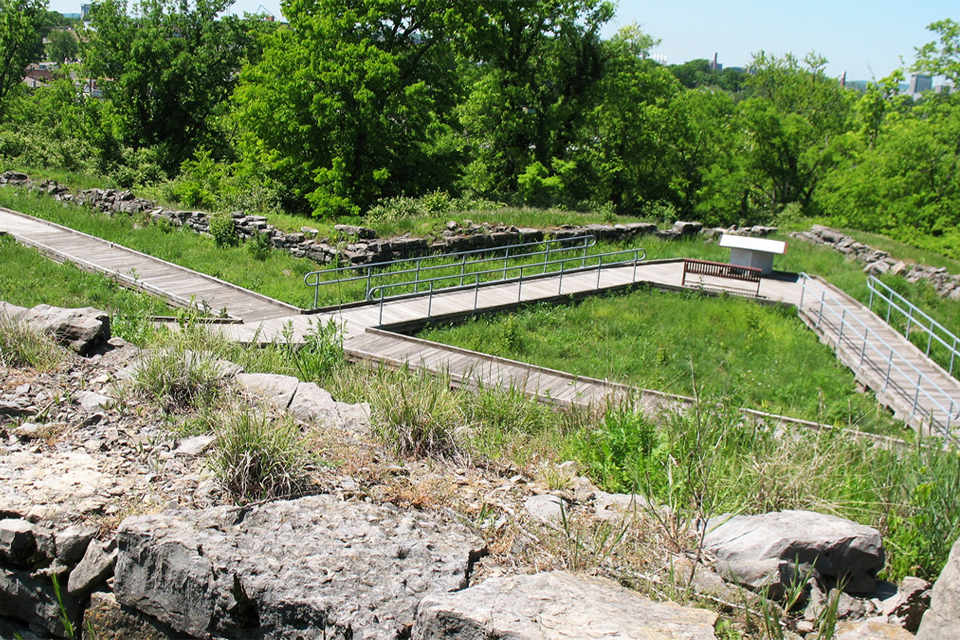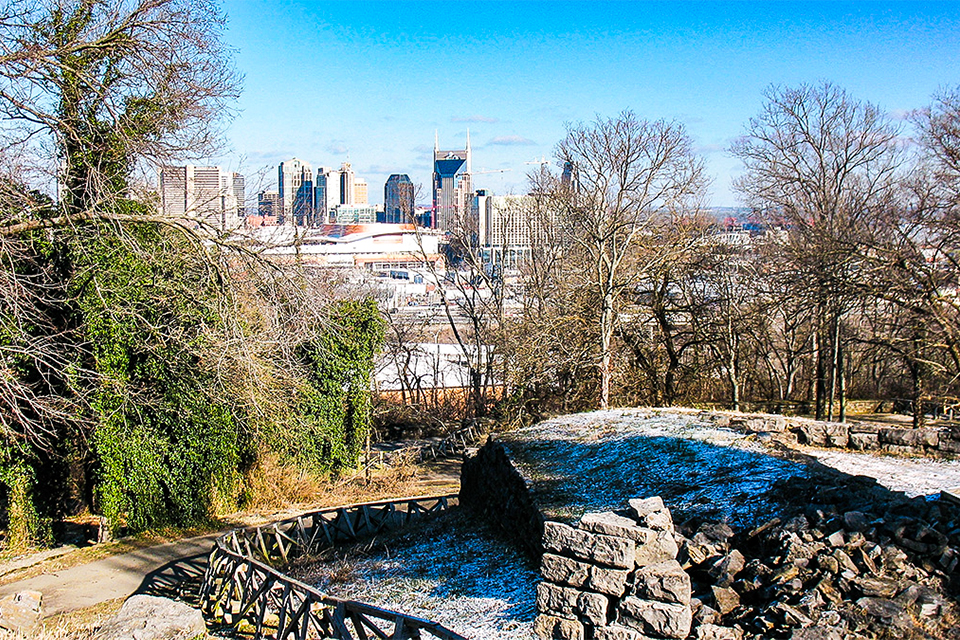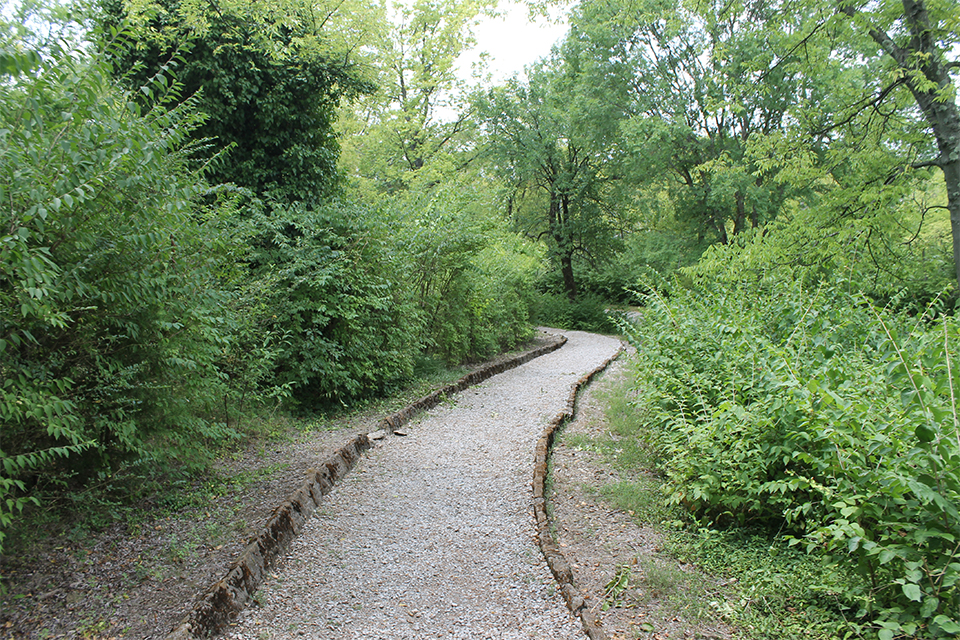Just over a mile south of Nashville’s downtown is Fort Negley Park, an urban greenspace that occupies the Civil War site of “Fort Negley.” While the fort is significant in military history as the largest inland masonry fortification built during the Civil War, this city-owned park contains other important historic, cultural, and natural landscape features that connect to virtually every era of Nashville’s past.
Background
Most of the 55 acres in Fort Negley Park once belonged to Judge John Overton, one of Tennessee’s most prominent early citizens, who began acquiring the land between 1805 and 1828. Overton’s tract, which featured a rocky prominence known locally as “Saint Cloud Hill,” remained undeveloped until the Civil War, when the Union Army occupied Nashville in 1862 and seized the land to fortify the city. Constructed of white limestone on the crest of Saint Cloud Hill, Fort Negley was the crown jewel of the federal fortifications and entrenchments that ringed the city. It was built by African Americans who were enslaved or had fled from enslavement.
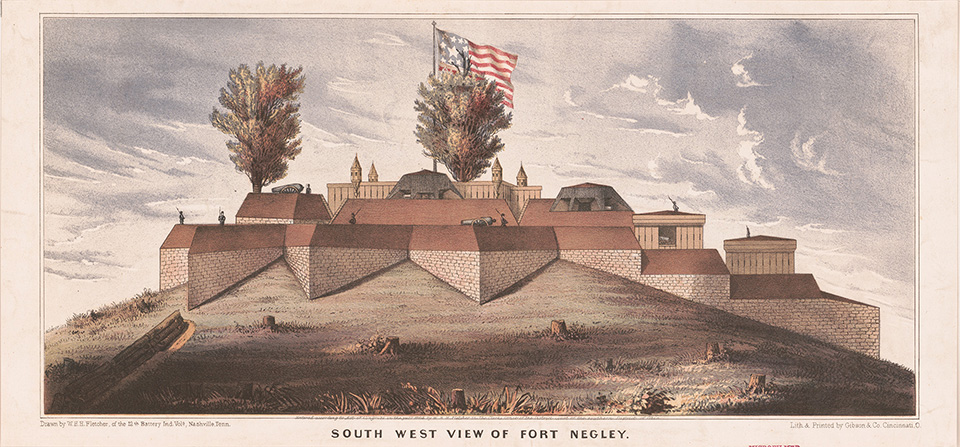 South West View Of Fort Negley, Fort Negley Park, Nashville, TN, 1864. Image by Gibson & Co., courtesy LOC.
South West View Of Fort Negley, Fort Negley Park, Nashville, TN, 1864. Image by Gibson & Co., courtesy LOC.
In the early twentieth century, Civil War commemorative efforts inspired three unsuccessful attempts to establish a National Battlefield Park at Fort Negley in remembrance of the 1864 Battle of Nashville. In 1928 Nashville’s Parks Board purchased Overton’s Saint Cloud Hill tract from his heirs with the intent of restoring the fort “as it was during the Civil War and make of the land a public park.” In 1935 the Board applied for Works Progress Administration (WPA) funding to develop the land into “a decided addition to the park system of the City of Nashville besides adding an excellent historical point of interest for tourists.”
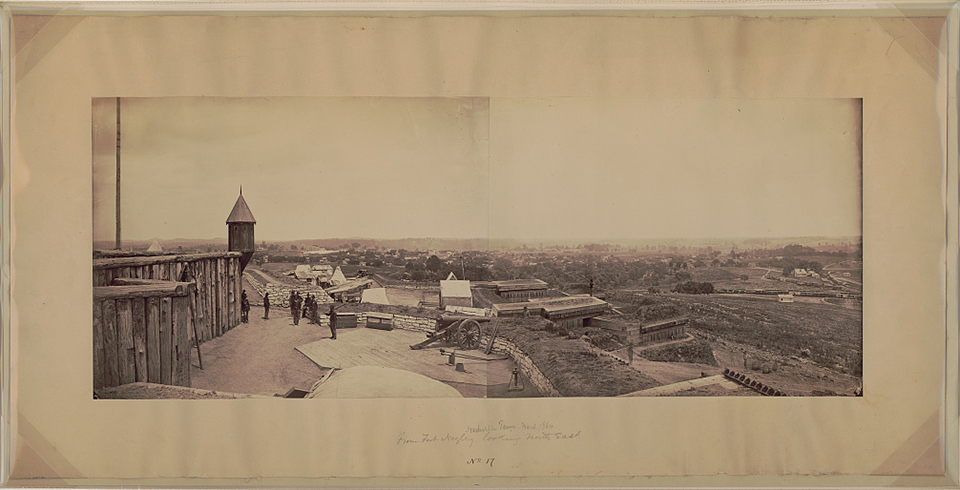 Nashville, Tenn. From Fort Negley Looking Northeast, Fort Negley Park, Nashville, TN, 1864. Photo by George N. Barnard, courtesy LOC.
Nashville, Tenn. From Fort Negley Looking Northeast, Fort Negley Park, Nashville, TN, 1864. Photo by George N. Barnard, courtesy LOC.
By 1941 relief workers had transformed nearly 50 acres passed down through Overton’s family into a multi-use public recreation facility that included the restored fort and stockade, a sports complex with four softball fields, a hardball field that was also used as a boxing ring, stone bleachers and a comfort station, open greenspace, and hundreds of feet of limestone walls. A significant amount of WPA-built stonework remains in Fort Negley Park. Workers quarried the limestone on-site, mining the hillside and exposing a large stratum of 500-million-year-old fossil coral.
By the beginning of World War II the restored fort’s wooden stockade had deteriorated, and the fort was closed to the public. However, softball games continued to be held at the WPA-built diamonds. In the late 1970s the Nashville Sounds baseball team leased the ball field section of Fort Negley Park and built Greer Stadium and parking lots on the site.
The city’s Fort Negley Master Plan (1996) focused on re-opening the fort to public visitation and stabilizing its WPA-era dry-stacked masonry walls. Since then, research has revealed archaeological remains. On the northeast edge of the park is the vestige of what appears to be an old roadbed. Historic maps suggest that this is a section of the lane that led into the city’s first Catholic cemetery, built before 1850. Though barely visible, this unique cultural landscape feature is a tangible connection to Nashville’s early nineteenth-century Irish and German immigration story. Prior to the Civil War, the cemetery was relocated to make way for construction of one of Nashville’s early railroads.
On the hillside north and east of the fort archaeologists found evidence of federal encampments and a portion of a federal entrenchment. North of the entrenchment, along the park’s northern boundary, are trace outlines of fence rows and foundations from an African American neighborhood that developed near the fort after the Civil War. These lot lines also connect to Nashville’s urban renewal and Civil Rights era since a considerable amount of land in this neighborhood was taken in the 1960s for construction of an interstate highway and interchange.
Fort Negley, which was listed in the National Register of Historic Places in 1975, is Nashville’s only intact Civil War era fort. In 2004 Fort Negley was reopened to the public on the 140th anniversary of the Battle of Nashville; it was designated a local Historic Landmark District in 2005. The Sounds moved to a new stadium in 2015, allowing its site to be reclaimed as park space.
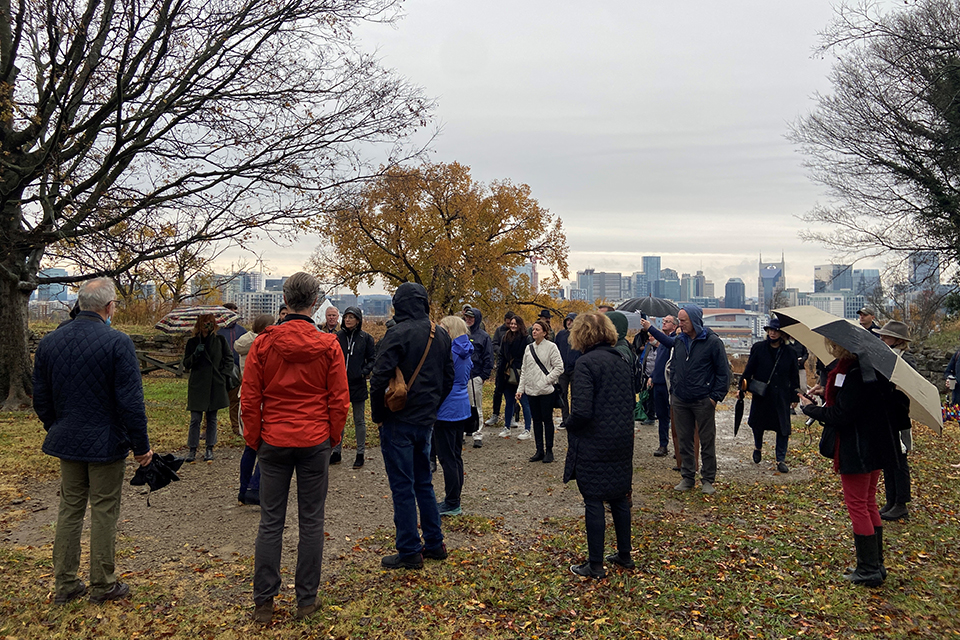
Tour of Fort Negley Park During 2021 ASLA Conference on Landscape Architecture, Fort Nagley Park, Nashville, TN, 2021. Photo courtesy The Cultural Landscape Foundation.
Advocacy and Engagement
In January 2017 the Nashville Mayor's office released a Request for Qualifications (RFQ) for the development of the 18.2-acre Greer Stadium property, which is a part of Fort Negley Park; this resulted in the site’s May 2017 enrollment as a TCLF Landslide site, and an unrelenting advocacy campaign, which included further highlighting the park in TCLF’s Landslide 2017: Open Season on Open Space. The development proposal also received stiff blowback from Friends of Fort Negley and the Civil War Trust.
The City of Nashville selected the commercial real estate firm The Mathews Company (whose development was forwarded under the name Cloud Hill Partnership) to build the mixed-use development, including: 117,000 square feet of office space; 48,350 square feet of neighborhood retail; 28,000 square feet of art and music space; a 21,200-square-foot community and culture shed; 294 units of housing; and approximately eight acres of parkland. The Nashville mayor’s office strongly supported Cloud Hill’s proposal; however, an ethics complaint filed in the summer of 2017 led to the revelation that city officials had met with the developer’s representatives at least twice prior to the city’s release of an official RFQ.
Opposition continued to mount and on October 6, 2017, Historic Nashville announced its annual list of endangered sites. Rather than their usual “Nashville Nine,” the list included one site only: Fort Negley Park.
Park advocates noted that Fort Negley and the park are significant for African American history and heritage from the Civil War era though Reconstruction, to the Civil Rights era. Dr. Learotha Williams, associate professor of African American and public history at Tennessee State University, writing in the Tennessean, called Fort Negley Park a “sacred site,” and Robert Hicks, a New York Times best-selling author and advocate for Civil War-era sites, termed the area “hallowed ground.”
Others said the site may contain the remains of Civil War dead and hundreds of African American workers who built the fort, although, following the Civil War, the remains of soldiers were relocated to the National Cemetery in Madison. Some remains may well have been disturbed and destroyed when the stadium and its parking facilities were built in the late 1970s. The city hired an archaeological firm to examine the site using ground-penetrating radar; they determined it was “highly likely” the site contained the remains of formerly enslaved people who built the fort. In January 2018 the developers pulled the plug on the project.
In April of 2019 TCLF published a What’s Out There printed and digital guidebook to Nashville and organized a weekend of free tours to more than two dozen sites in the city. One of these was to Fort Negley, and was led by Tim Netsch, Assistant Director for Planning and Facilities Development with Metro Parks, and Tim Walker, Executive Director for Nashville’s Department of Historic Preservation. Nearly 1,000 individuals registered for the packed tours.
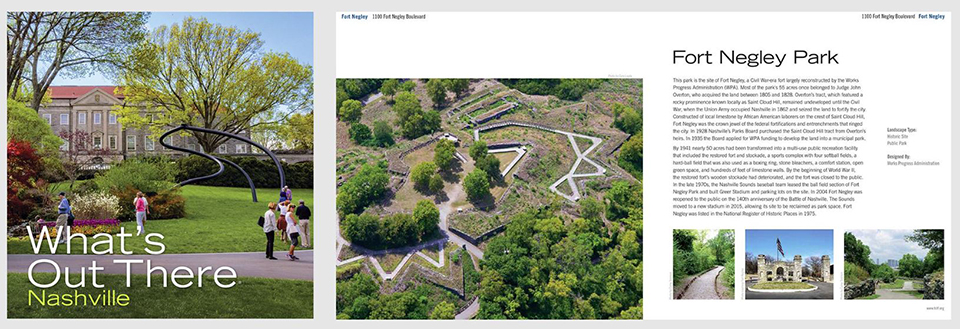 What’s Out There Nashville guidebook, 2019. Image courtesy The Cultural Landscape Foundation.
What’s Out There Nashville guidebook, 2019. Image courtesy The Cultural Landscape Foundation.
On May 21, 2019 Fort Negley was designated a ‘Site of Memory’ by UNESCO (United Nations Educational, Scientific and Cultural Organization); it is now part of UNESCO’s Slave Route Project and is enrolled in an international registry of places significant for their association with slavery.
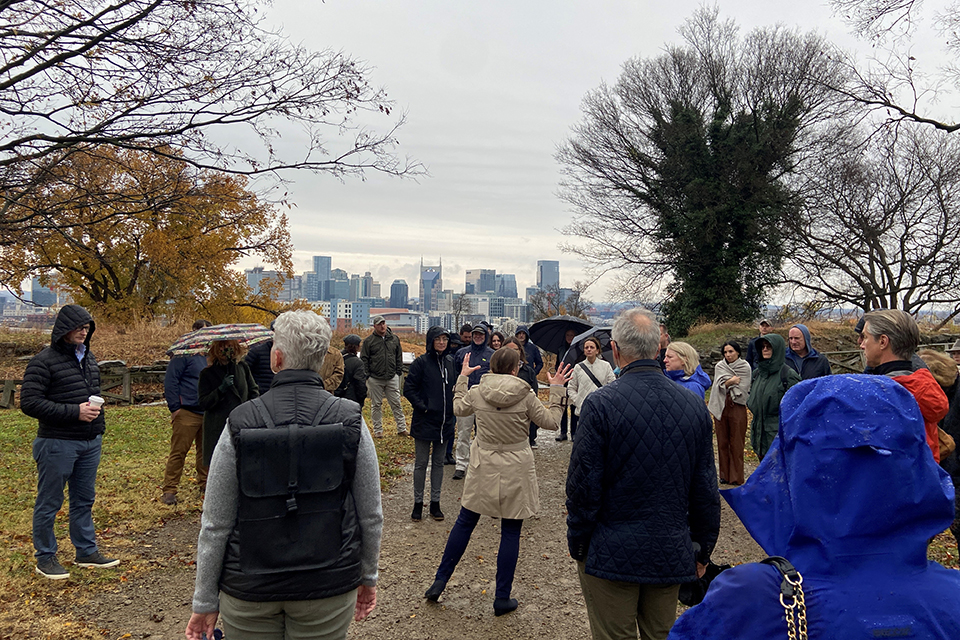 Tour of Fort Negley Park During 2021 ASLA Conference on Landscape Architecture, Fort Nagley Park, Nashville, TN, 2021. Photo courtesy The Cultural Landscape Foundation.
Tour of Fort Negley Park During 2021 ASLA Conference on Landscape Architecture, Fort Nagley Park, Nashville, TN, 2021. Photo courtesy The Cultural Landscape Foundation.
In 2020 the Nashville-based landscape architects HDLA were awarded the Fort Negley master plan by the city. In an extensive article about HDLA’s holistic approach in the July 2023 issue of Landscape Architecture Magazine, Kofi Boone wrote: “The final master plan … employs paths, plaza, meadows, and strategic interpretive vistas to offer a site sensitivity and light touch to what is a heavy and complex site.” He continued: “The plan uses an array of plazas strategically placed to mark thresholds from which visitors are encouraged to view interpretive panels that supplement the views and reflect the themes of the fort’s history. Unlike in previous plans, these plazas and views feature interpretations that extend beyond the Civil War and into the Reconstruction, Jim Crow, and urban renewal eras as well as through the late [twentieth] century.”
Selected Resources
“Fort Negley Saved From Development”
Nashville’s Fort Negley Named UNESCO 'Site of Memory'
Selected Media Coverage
“Fort Negley Park Recognized as a Threatened Cultural Landscape by National Foundation,” Joey Garrison, The Tennessean, October 12, 2017 “The Cultural Landscape Foundation Announces Threatened Landscapes of 2017,” Olivia Martin, The Architect’s Newspaper, October 13, 2017 “Mayor Cooper, Preservation Advocates Lauded for Steadfast Efforts to Protect Nashville’s Fort Negley,” Mary Koik, American Battlefields Trust News, May 17, 2023
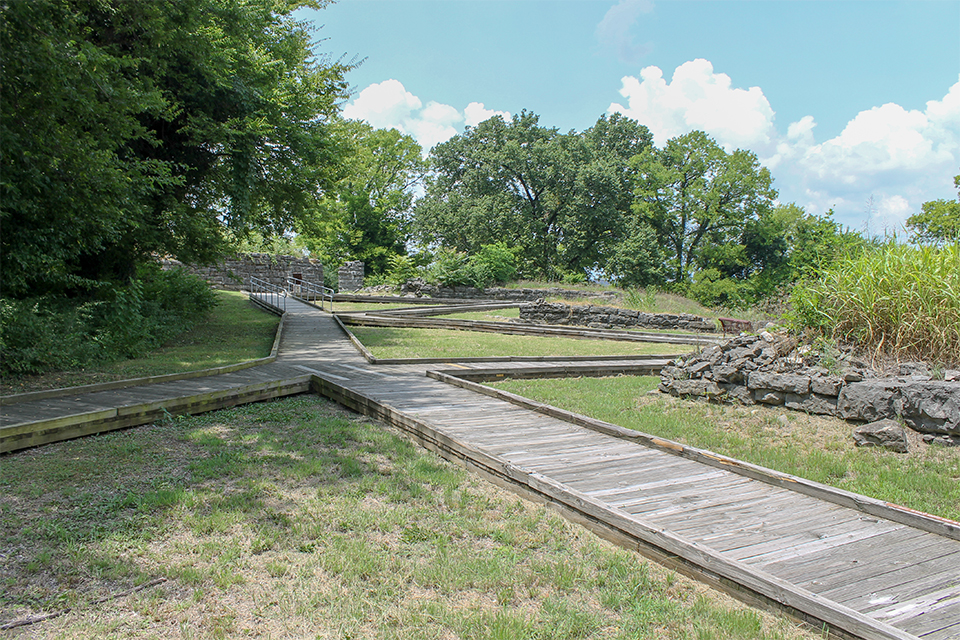
-
Fort Negley, Nashville, TN, 2014. Photo by Corey Seeman.
